Southern California
Category 3 hurricane approaches SoCal, excessive rain & flooding
The National Weather Service cautions most of SoCal will receive excessive rainfall & occasional bursts of high winds with flooding expected
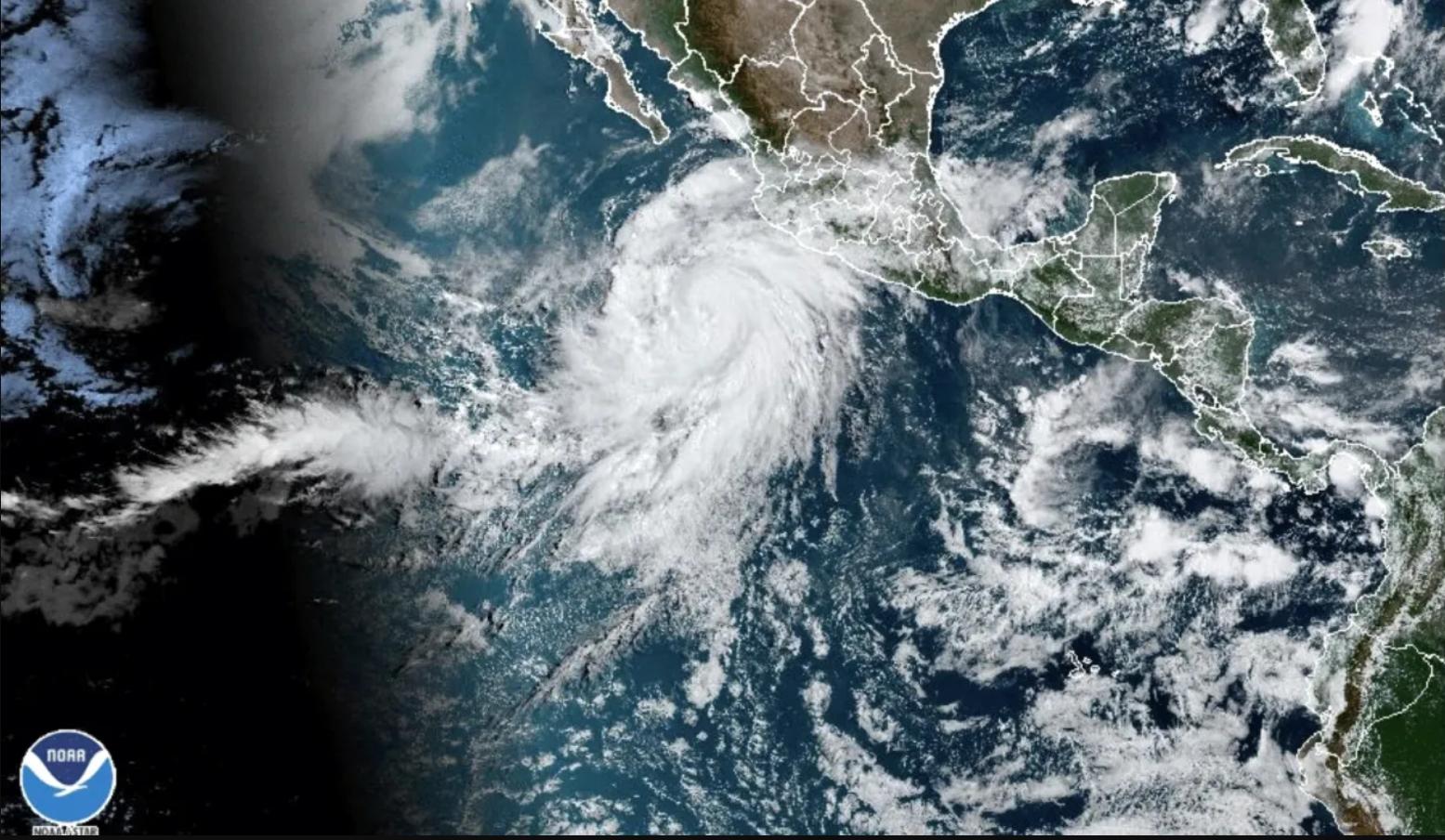
UPDATED 7:30 pm August17, 2023. (AP) Hurricane Hilary strengthened into a major storm Thursday evening off Mexico’s Pacific coast, and it could bring heavy rain to the southwestern U.S. by the weekend.
The U.S. National Hurricane Center said Hilary’s maximum sustained winds had risen to 120 mph (195 kph), making it a Category 3 hurricane.
The storm was expected to grow into a Category 4 hurricane Friday while on a projected path that threatened landfall on the central Baja California peninsula by Sunday or possibly keep just offshore while heading for Southern California.
MIAMI-DADE, Fla. – The U.S. National Hurricane Center, in an updated forecast Thursday, warned that the named tropical storm Hilary has been upgraded to a category 2 hurricane with maximum sustained winds of 105 mph and could perhaps skim the coast of the Baja California peninsula by the weekend as it heads North.
The National Weather Service Los Angeles area is cautioning that most of Southern California will receive excessive rainfall and occasional bursts of high winds with flooding expected in low lying areas.
The National Weather Service issued flood watches for the following areas, Orange County Coastal Areas, Orange County Inland Areas, San Bernardino and Riverside County Valleys-The Inland Empire, San Diego County Coastal Areas, San Diego County Valleys and Santa Ana Mountains and Foothills.
From late Saturday night through Monday evening, excessive runoff may result in flooding of rivers, creeks, streams, and other low-lying and flood-prone locations. Flooding in poor drainage and urban areas. Debris flows are possible on recent burn scars.
Hilary is forecast to reach Category 3 status at some point on Saturday the Hurricane Center noted in its warning.
KTLA meteorologist Henry DiCarlo said Thursday that the storm is forecast to drop several inches of rain on the Southland, especially in the desert areas where upwards of ten inches of rain could fall.
“When it moves onshore it’s going to bring a lot of rain. Not just for the desert areas but for all of us here in Southern California,” Henry said.
As #Hilary develops, there will be increasing southeast swell across the coastal waters Sun-Tue.
— NWS Los Angeles (@NWSLosAngeles) August 17, 2023
High surf (4-7 ft if not a bit higher) is possible on SE and S facing beaches. Also, strong rip currents will be likely.
Residents on Catalina Island could be most vulnerable.
A hurricane reaching Southern California would be extremely rare. The last one to make landfall was in 1858 in San Diego. No tropical storm has made landfall in Southern California since Sept. 25, 1939, according to the National Weather Service.
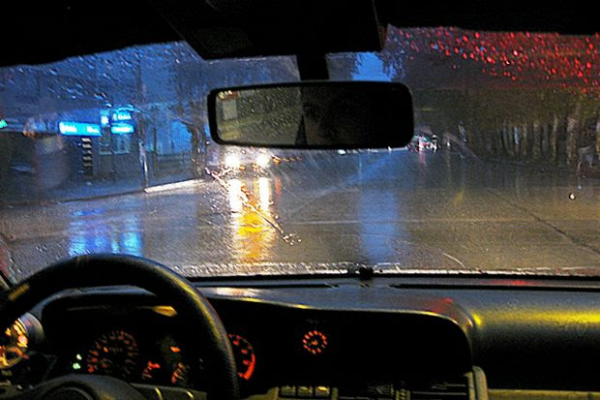
Auto Club Reminds Drivers Of Safety Dangers In Heavy Rain
With a tropical system forecast to dump heavy rain over parts of Southern California this weekend, the Auto Club is reminding motorists to slow down and allow more space between vehicles while driving on slick roads and freeways, and to stay off the roads during the heavy rain if possible.
“Driving into flooded areas on roads and freeways could damage your vehicle and place you in danger,” said Megan McKernan, manager of the Auto Club’s Automotive Research Center. “Often, it is hard to tell how deep the water is on the road, so don’t drive into a large water-covered area. Drivers should also watch for debris and disabled vehicles in reduced visibility conditions.”
To avoid crashes, the Auto Club recommends these tips:
Slow down.
Motorists should drive slowly, particularly through puddles. Driving at slower speeds also helps drivers be prepared for sudden stops due to debris, and other hazards associated with wet-weather driving.
Keep your distance/Avoid skids.
A car needs two to three times more stopping distance on wet pavement, so allow extra following distance between cars. Sudden braking often leads to skids. Extra distance provides a buffer zone in case of skids. If the car skids and control is lost, do not slam on the brakes. Instead apply the brakes with a steady, light but firm pressure. Remember to steer in the direction the car is sliding. When traction is regained, steering control will return. For cars equipped with anti-lock brakes, drivers should apply heavy steady pressure, but not pump the brakes.
Use center lanes.
When driving during heavy rain, use center lanes of the road (without straddling the yellow line). Avoid outside lanes where water collects at curbside.
Avoid distractions.
Don’t drive while “intexticated” or while performing any other activities that are not focused on safe driving.
Stay informed.
Tune into radio and television weather reports to know where traffic congestion or crashes might be located. If possible, avoid these areas.
Treat inoperable traffic light intersections as four-way stops.
The storm could cause power outages affecting traffic lights.
Also, performing vehicle maintenance before driving in wet weather is crucial. Motorists are advised to follow this checklist:
Check tires.
Make sure tires are in good condition and are at the recommended inflation level. Driving with bald tires on a slippery surface is a major factor in skidding. Tires should have at least 1/32nd of an inch tread depth at any two adjacent grooves, the minimum allowable by law. Driving on tires that are over inflated or under-inflated is also extremely dangerous on wet pavement.
Make sure windshield wiper blades are in good condition.
Streaks or skipping on the vehicle’s windshield are signs of worn wiper blades. Inspect wipers once a month and check washer solvent reservoir to ensure it’s full. Use windshield washer fluid, and not water, since it is formulated to cut through oils that may get splashed on the windshield and will not harm paint.
Check brakes periodically.
After driving through a puddle, check that brakes are working properly by tapping them gently a few times.
Use headlights and windshield defroster.
Driving in the rain means reduced visibility. The Auto Club recommends that motorists turn on the vehicle’s headlights so they can see and be seen. Turning on the defroster helps keep the inside of the windshield clear of moisture.
Community Services - PSA
LGBTQ+ voter education town hall held tonight in Los Angeles
Unique Women’s Coalition, Equality California and FLUX host discussion on upcoming election.
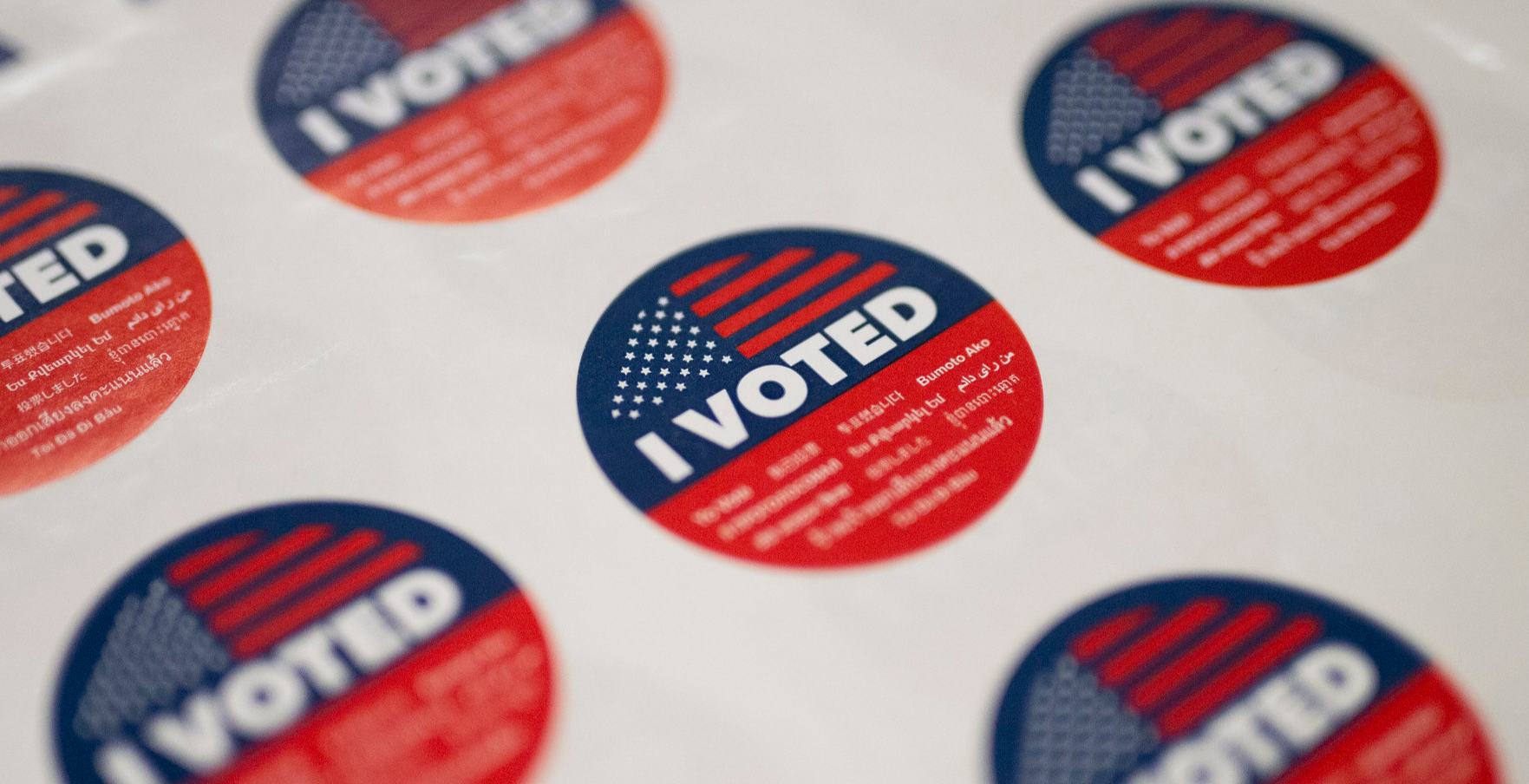
The Unique Women’s Coalition, Equality California and FLUX, a national division of the AIDS Healthcare Foundation, will host their second annual voter education town hall today at the Connie Norman Transgender Empowerment Center in Los Angeles from 7PM to 9PM tonight.
The organizations will present and discuss ballot propositions and measures that will appear on the November ballot and that affect the LGBTQ+ community in this part of the town hall series titled ‘The Issues.’
“The trans and nonbinary community is taking its seat at the table, and we are taking the time and space to be informed and prepare the voter base,” said Queen Victoria Ortega, international president of FLUX.
The town hall will feature conversations through a Q&A followed by a reception for program participants, organizational partners and LGBTQ+ city and county officials.
There will later be a third town hall before the election and The Connie Norman Transgender Empowerment Center will also become a voting location for anyone who feels like they need a safe space to vote, regardless of what voting district they are a part of.
“Our community is really asking for a place to talk about what all of this actually means because although we live in a blue sphere, housing and other forms of discrimination are still a very real threat,” said Scottie Jeanette Madden, director of advocacy at The Connie Norman Transgender Empowerment Center.
Southern California
Triple A: SoCal gas prices continue dropping quickly
The average price for self-serve regular gasoline in California is $4.87, which is 11 cents lower than a week ago
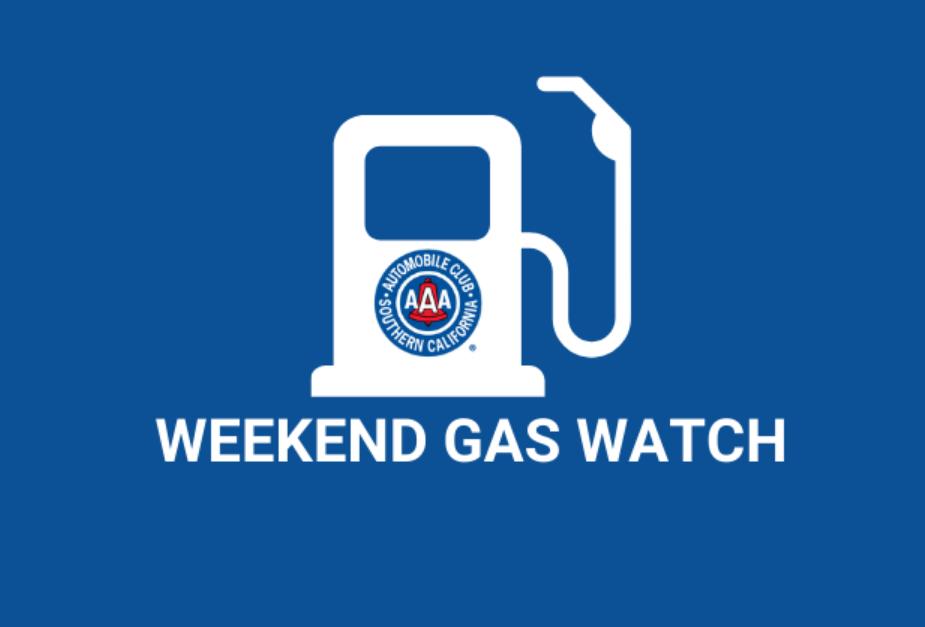
LOS ANGELES – Gas prices in Southern California have dropped by more than 50 cents a gallon in most areas after two straight months of price declines, according to the Auto Club’s Weekend Gas Watch. The average price for self-serve regular gasoline in California is $4.87, which is 11 cents lower than a week ago. The average national price is $3.46, which is two cents lower than a week ago.
The average price of self-serve regular gasoline in the Los Angeles-Long Beach area is $4.83 per gallon, which is 10 cents less than last week and 13 cents less than last year. In San Diego, the average price is $4.85, which is 10 cents lower than last week and eight cents lower than this time last year.
On the Central Coast, the average price is $4.97, which is five cents lower than last week and two cents higher than last year. In Riverside, the average per-gallon price is $4.75, which is 10 cents lower than last week and 10 cents lower than a year ago. In Bakersfield, the $4.96 average price is eight cents less than last week and nine cents higher than a year ago today.
“Oil Price Information Service reports the latest Energy Information Administration data shows that West Coast refinery utilization rates reached their highest production levels of 2024 at the beginning of this month,” said Auto Club Spokesperson Doug Shupe. “California continues to have the highest gas prices in the U.S., but this week for the first time since March, gas prices in most local areas are lower than at this time a year ago.”
The Weekend Gas Watch monitors the average price of gasoline. As of 9 a.m. on June 13, averages are:

Southern California
Triple A: Statewide gas price average drops below $5 a gallon
The average price for self-serve regular gasoline in California is $4.98, which is 11 cents lower than a week ago

LOS ANGELES – The California gas price average dropped below $5 a gallon for the first time since late March, according to the Auto Club’s Weekend Gas Watch. The average price for self-serve regular gasoline in California is $4.98, which is 11 cents lower than a week ago. The average national price is $3.48, which is eight cents lower than a week ago.
The average price of self-serve regular gasoline in the Los Angeles-Long Beach area is $4.93 per gallon, which is 12 cents less than last week and the same price as last year. In San Diego, the average price is $4.95, which is 12 cents lower than last week and six cents higher than this time last year.
On the Central Coast, the average price is $5.02, which is eight cents lower than last week and 12 cents higher than last year. In Riverside, the average per-gallon price is $4.95, which is 11 cents lower than last week and three cents higher than a year ago. In Bakersfield, the $5.04 average price is eight cents less than last week and 17 cents higher than a year ago today.
“According to Oil Price Information Service, Los Angeles wholesale gasoline prices are dropping as large supplies of imported gasoline continue to arrive in Southern California,” said Auto Club Spokesperson Doug Shupe. “A few Southern California gas stations are now charging less than $4.10 a gallon for regular unleaded.”
The Weekend Gas Watch monitors the average price of gasoline. As of 9 a.m. on June 6, averages are:

Southern California
‘Heat dome’ brings scorching conditions but coastal areas spared
The Los Angeles County Health Officer has issued an excessive heat warning as high temperatures have been forecast
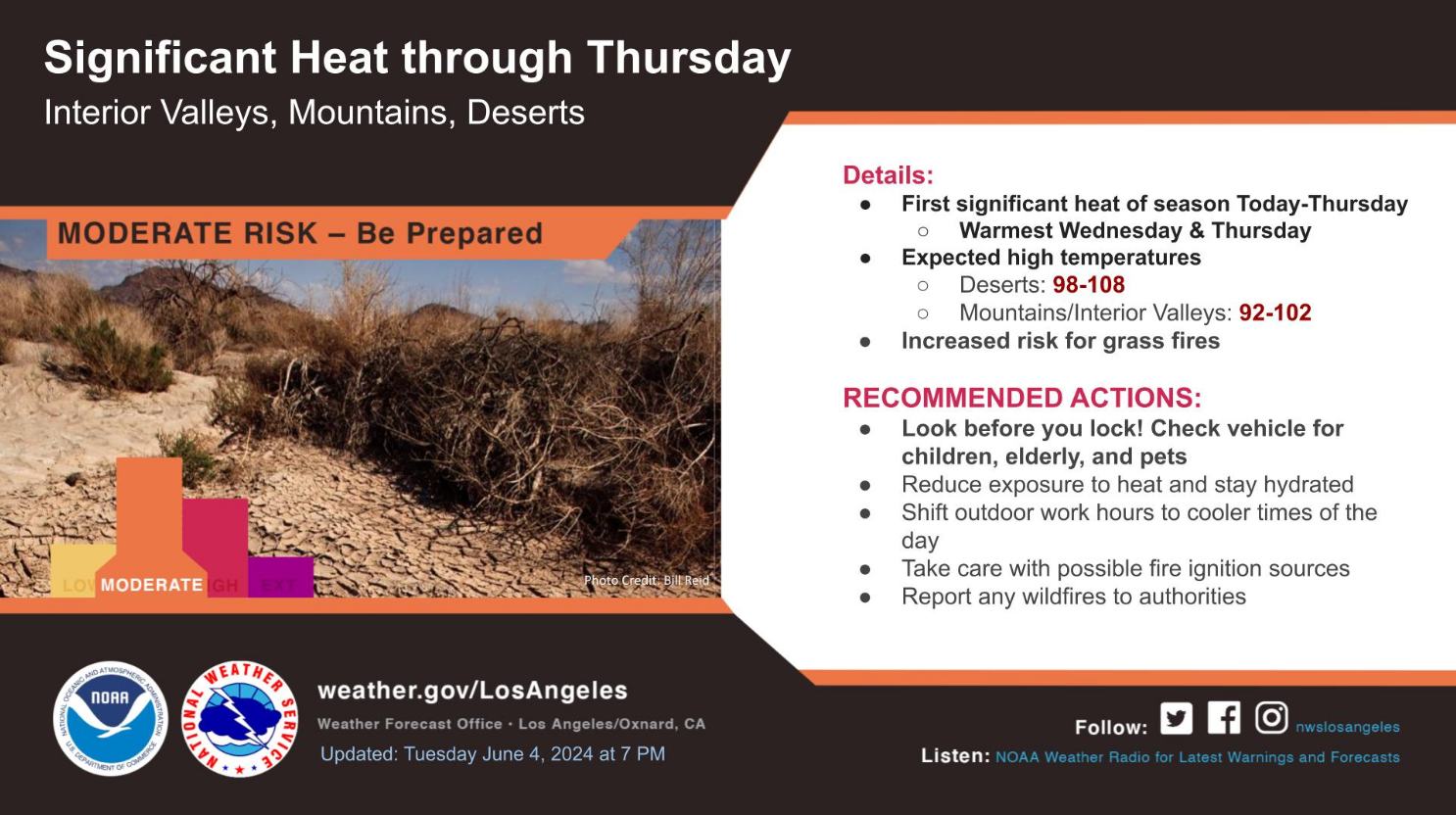
OXNARD, Calif. – The first significant heat of the season has arrived for the interior, and is expected to last into Thursday. Temperatures will be warmest Wednesday and Thursday, with highs in the deserts from 98 to 108, and 92 to 102 for the mountains and interior valleys.
Drier conditions along with breezy conditions will lead to an increased risk for grass fires. Reduce exposure to the heat, and stay hydrated. Look before locking vehicles for children, elderly and pets. Vehicles can become dangerously hot in a short period of time. Report any wildfires to authorities.
High Temperatures Forecast for Parts of Los Angeles County
The Los Angeles County Health Officer has issued an excessive heat warning as high temperatures have been forecast for the following areas:
- Antelope Valley: Wednesday June 05, 2024 through Thursday June 06, 2024
- Western Antelope Valley: Wednesday June 05, 2024 through Thursday June 06, 2024
- Eastern Antelope Valley: Wednesday June 05, 2024 through Thursday June 06, 2024
Public Health reminds everyone to take precautions to avoid heat-related illness, especially older adults, young children, outdoor workers, athletes, and people with a chronic medical condition who are especially sensitive to negative health impacts from extreme heat. Public Health offers the following recommendations during high temperature days:
- Drink plenty of water and keep hydrated throughout the day.
- If you must go out, plan your day to avoid going out during the hottest hours, and wear sunscreen. Wear lightweight, light-colored clothes, and wear a hat or use an umbrella.
- Cars get very hot inside, even if the windows are ‘cracked’ or open. Never leave children or pets in cars. Call 911 if you see a child or pet in a car alone.
- Beware of and know what to do for heat-related illness, such as heat exhaustion and heat stroke. Call 911 right away if you see these symptoms: high body temperature (103°F or higher), vomiting, dizziness, confusion, and hot, red, dry, or damp skin. Heat stroke is a medical emergency.
- Check on those at risk for heat-related illness, like those who are sick or have chronic conditions, older adults, pregnant women, children, those who live alone, pets, and outdoor workers and athletes.
- If you are wearing a mask, avoid strenuous workouts wearing face coverings or masks not intended for athletic purpose
- Visit your power company’s website or contact them by phone to determine if you are scheduled for a rolling power outage.
“On hot days, it’s important for everyone to both take care of themselves and check on others, especially those who have a higher chance of getting ill due to the heat. Some of them include children, the elderly, those with health conditions, pregnant people, those living alone, and pets,” said Muntu Davis, MD, MPH, Los Angeles County Health Officer. “Hot days can be dangerous for anyone, so it’s crucial to stay cool and hydrated. Never leave children, the elderly, or pets alone in hot homes, places, or vehicles. Make sure to check on elderly or unwell neighbors and relatives regularly.”
County and City partners have planned ways to safely operate cooling centers during times of high heat. Residents who do not have access to air conditioning are encouraged to take advantage of these free cooling centers. To find a location near you, visit https://ready.lacounty.gov/heat/ or call 211.
Los Angeles County residents and business owners, including people with disabilities and others with access and functional needs can call 2-1-1 for emergency preparedness information and other referral services. The toll-free 2-1-1 number is available 24 hours a day, seven days a week. 211 LA County services can also be accessed by visiting 211la.org.
Southern California
Triple A: Finally, some SoCal cities drop below $5 a gallon
The average price for self-serve regular gasoline in California is $5.09, which is six cents lower than a week ago

LOS ANGELES – Six straight weeks of price drops at Southern California gas stations have pushed average prices below $5 a gallon in a few cities, according to the Auto Club’s Weekend Gas Watch. The average price for self-serve regular gasoline in California is $5.09, which is six cents lower than a week ago. The average national price is $3.56, which is four cents lower than a week ago.
The average price of self-serve regular gasoline in the Los Angeles-Long Beach area is $5.05 per gallon, which is six cents less than last week and 12 cents higher than last year. In San Diego, the average price is $5.07, which is six cents lower than last week and 17 cents higher than this time last year.
On the Central Coast, the average price is $5.10, which is six cents lower than last week and 21 cents higher than last year. In Riverside, the average per-gallon price is $4.96, which is six cents lower than last week and 13 cents higher than a year ago. In Bakersfield, the $5.12 average price is five cents less than last week and 29 cents higher than a year ago today.
“Oil Price Information Service reports that wholesale Los Angeles gasoline prices are continuing to drop because of increased availability of imported gasoline and reportedly lower levels of demand compared to last year,” said Auto Club Spokesperson Doug Shupe. “Those factors should help pump price drops to continue for now.”
The Weekend Gas Watch monitors the average price of gasoline. As of 9 a.m. on May 30, averages are:

Southern California
Triple A: Memorial Day travelers get a break at the pump
The average price for self-serve regular gasoline in California is $5.15, which is nine cents lower than a week ago

LOS ANGELES – Gas prices continued downward for a fifth straight week, giving some Southern California Memorial Day travelers the chance to fill up for about $4.50 a gallon or even less in a few areas, according to the Auto Club’s Weekend Gas Watch. The average price for self-serve regular gasoline in California is $5.15, which is nine cents lower than a week ago. The average national price is $3.61, which is one cent higher than a week ago.
The average price of self-serve regular gasoline in the Los Angeles-Long Beach area is $5.11 per gallon, which is ten cents less than last week, 27 cents less than last month, and 25 cents higher than last year. In San Diego, the average price is $5.13, which is ten cents lower than last week, 23 cents lower than last month, and 29 cents higher than this time last year.
On the Central Coast, the average price is $5.16, which is five cents lower than last week, 17 cents lower than last month, and 30 cents higher than last year. In Riverside, the average per-gallon price is $5.02, which is ten cents lower than last week, 28 cents lower than last month and 25 cents higher than a year ago. In Bakersfield, the $5.17 average price is five cents less than last week, 15 cents less than last month, and 36 cents higher than a year ago today.
“With an all-time record number of Southern California travelers expected for this Memorial Day getaway weekend, the gas price drops are providing some welcome relief,” said Auto Club Spokesperson Doug Shupe. “Those travelers who are planning out-of-state trips should expect to pay even less when they fuel up for their return, since California continues to be the only U.S. state with a gas price average above $5 a gallon.”
The Weekend Gas Watch monitors the average price of gasoline. As of 9 a.m. on May 23, averages are:

Southern California
Triple A: Gas prices drop for four straight weeks
The average price for self-serve regular gasoline in California is $5.24, which is eight cents lower than a week ago

LOS ANGELES – Local gas prices have dropped for four straight weeks, but California continues to be the only state with an average price above $5 a gallon, according to the Auto Club’s Weekend Gas Watch. The average price for self-serve regular gasoline in California is $5.24, which is eight cents lower than a week ago. The average national price is $3.60, which is four cents lower than a week ago.
The average price of self-serve regular gasoline in the Los Angeles-Long Beach area is $5.21 per gallon, which is eight cents less than last week, 18 cents less than last month, and 37 cents higher than last year. In San Diego, the average price is $5.23, which is six cents lower than last week, 14 cents lower than last month, and 41 cents higher than this time last year.
On the Central Coast, the average price is $5.22, which is five cents lower than last week, 14 cents lower than last month, and 38 cents higher than last year. In Riverside, the average per-gallon price is $5.12, which is eight cents lower than last week, 19 cents lower than last month and 36 cents higher than a year ago. In Bakersfield, the $5.23 average price is three cents less than last week, eight cents less than last month, and 40 cents higher than a year ago today.
“California continues to have the highest average gas prices in the U.S., and despite a month of price declines, the state average price is still more than 40 cents higher than Hawaii, which is the second most expensive state for fuel,” said Auto Club Spokesperson Doug Shupe.
The Weekend Gas Watch monitors the average price of gasoline. As of 9 a.m. on May 16, averages are:

Southern California
Triple A: Gas prices head down for third straight week
The average price for self-serve regular gasoline in California is $5.32, which is six cents lower than a week ago

LOS ANGELES – Southern California gas prices have dropped for the third straight week, according to the Auto Club’s Weekend Gas Watch. The average price for self-serve regular gasoline in California is $5.32, which is six cents lower than a week ago. The average national price is $3.64, which is three cents lower than a week ago.
The average price of self-serve regular gasoline in the Los Angeles-Long Beach area is $5.28 per gallon, which is six cents less than last week, six cents less than last month, and 42 cents higher than last year. In San Diego, the average price is $5.29, which is five cents lower than last week, five cents lower than last month, and 44 cents higher than this time last year.
On the Central Coast, the average price is $5.27, which is six cents lower than last week, two cents lower than last month, and 41 cents higher than last year. In Riverside, the average per-gallon price is $5.20, which is seven cents lower than last week, five cents lower than last month and 43 cents higher than a year ago. In Bakersfield, the $5.26 average price is four cents less than last week, five cents more than last month, and 42 cents higher than a year ago today.
“According to Oil Price Information Service (OPIS), California and all West Coast refineries are continuing to operate at higher capacities and West Coast gasoline inventories are increasing in anticipation of higher summer demand,” said Auto Club Spokesperson Doug Shupe.
The Weekend Gas Watch monitors the average price of gasoline. As of 9 a.m. on May 9, averages are:

Southern California
Triple A: SoCal gas prices continue downward
The average price for self-serve regular gasoline in California is $5.38, which is three cents lower than a week ago

LOS ANGELES – Southern California gas prices are continuing to drop for a second straight week, according to the Auto Club’s Weekend Gas Watch. The average price for self-serve regular gasoline in California is $5.38, which is three cents lower than a week ago. The average national price is $3.67, which is one cent higher than a week ago.
The average price of self-serve regular gasoline in the Los Angeles-Long Beach area is $5.34 per gallon, which is three cents less than last week, 18 cents higher than last month, and 44 cents higher than last year. In San Diego, the average price is $5.34, which is two cents lower than last week, 19 cents higher than last month, and 45 cents higher than this time last year.
On the Central Coast, the average price is $5.33, which is the same as last week, 22 cents higher than last month, and 45 cents higher than last year. In Riverside, the average per-gallon price is $5.27, which is two cents lower than last week, 21 cents higher than last month and 45 cents higher than a year ago. In Bakersfield, the $5.30 average price is one cent less than last week, 29 cents more than last month, and 44 cents higher than a year ago today.
“After a few months of supply interruptions from refinery breakdowns and maintenance, Oil Price Information Service (OPIS) reports that California refineries have been operating at above 86% of their capacity for the past two weeks,” said Auto Club Spokesperson Doug Shupe. “Additionally, OPIS reported the US Energy Information Administration believes that the country has already experienced its highest gas price point for the first half of this year. Although California prices often go against national trends, that prediction is an encouraging sign for further price drops at the pump.”
The Weekend Gas Watch monitors the average price of gasoline. As of 9 a.m. on May 2, averages are:

Southern California
Triple A: Southern California gas prices begin to slowly decrease
The average price for self-serve regular gasoline in California is $5.41, which is four cents lower than a week ago

LOS ANGELES – Southern California gas prices slightly decrease in almost every metro city, according to the Auto Club’s Weekend Gas Watch. The average price for self-serve regular gasoline in California is $5.41, which is four cents lower than a week ago. The average national price is $3.66, which is also one cent higher than a week ago.
The average price of self-serve regular gasoline in the Los Angeles-Long Beach area is $5.37 per gallon, which is two cents less than last week, 33 cents higher than last month, and 44 cents higher than last year. In San Diego, the average price is $5.36, which is two cents lower than last week, 34 cents higher than last month, and 45 cents higher than this time last year.
On the Central Coast, the average price is $5.33, which is two cents lower than last week, 31 cents higher than last month, and 43 cents higher than last year. In Riverside, the average per-gallon price is $5.29, which is three cents lower than last week, 37 cents higher than last month, and 45 cents higher than a year ago. In Bakersfield, the $5.31 average price is the same as last week, 40 cents more than last month, and 43 cents higher than a year ago today.
“For the first time in almost two months prices in Southern California have slightly decreased,” said Auto Club Spokesperson Doug Shupe. “The reasons for gas prices moving lower include slowing domestic gasoline demand between Spring Break and summer travel, as well as the cost of crude oil retreating.”
The Weekend Gas Watch monitors the average price of gasoline. As of 9 a.m. on April 25, averages are:
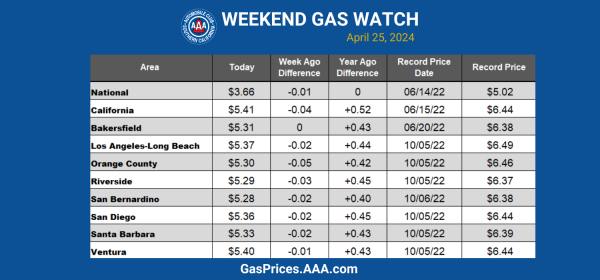
-
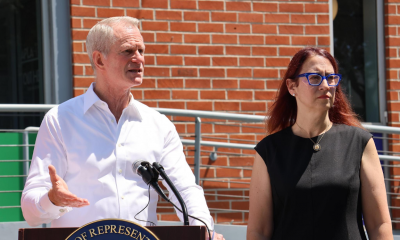
 Breaking News1 day ago
Breaking News1 day agoMajor victory for LGBTQ funding in LA County
-

 Features1 day ago
Features1 day agoKoaty & Sumner: Finding love in the adult industry
-

 a&e features4 days ago
a&e features4 days agoLatina Turner comes to Bring It To Brunch
-

 Books3 days ago
Books3 days agoTwo new books on dining out LGBTQ-style
-

 Television4 days ago
Television4 days ago‘White Lotus,’ ‘Severance,’ ‘Andor’ lead Dorian TV Awards noms
-
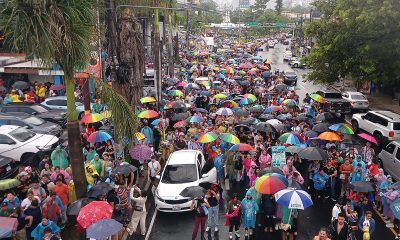
 El Salvador1 day ago
El Salvador1 day agoLa marcha LGBTQ+ desafía el silencio en El Salvador
-

 Miscellaneous10 hours ago
Miscellaneous10 hours agoCan you really find true love in LA? Insights from a queer matchmaker
-

 Arts & Entertainment11 hours ago
Arts & Entertainment11 hours agoIntuitive Shana gives us her hot take for July’s tarot reading






